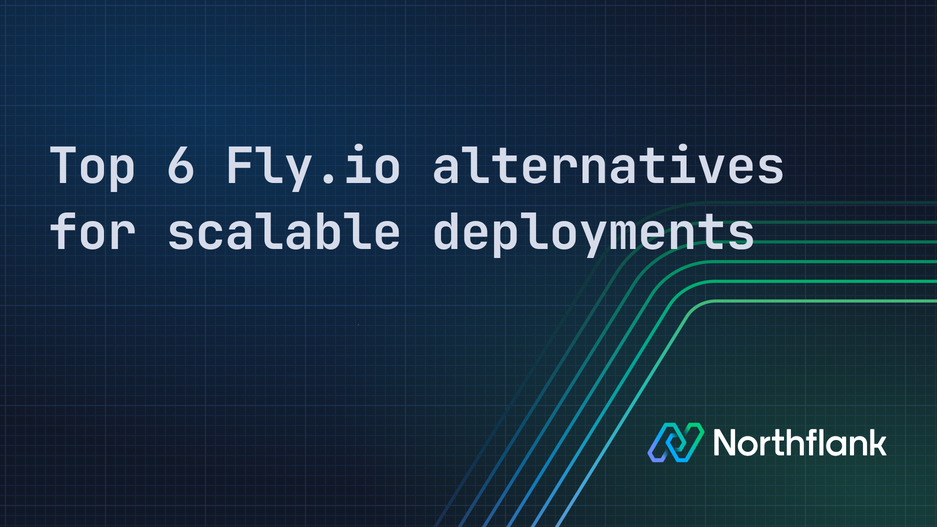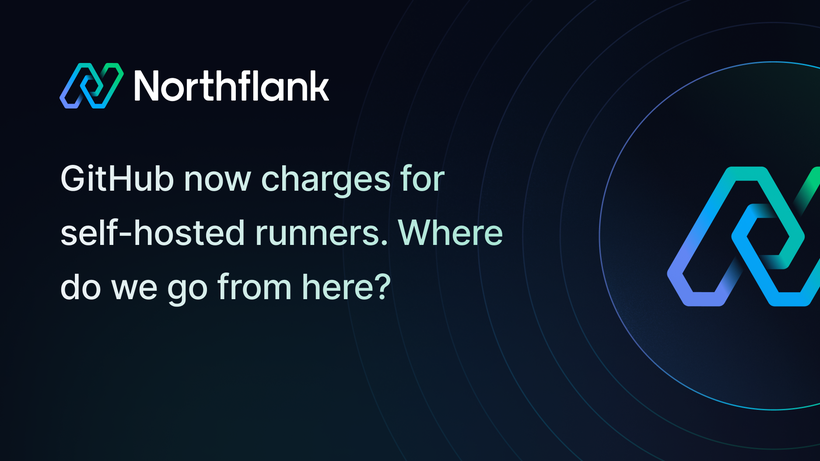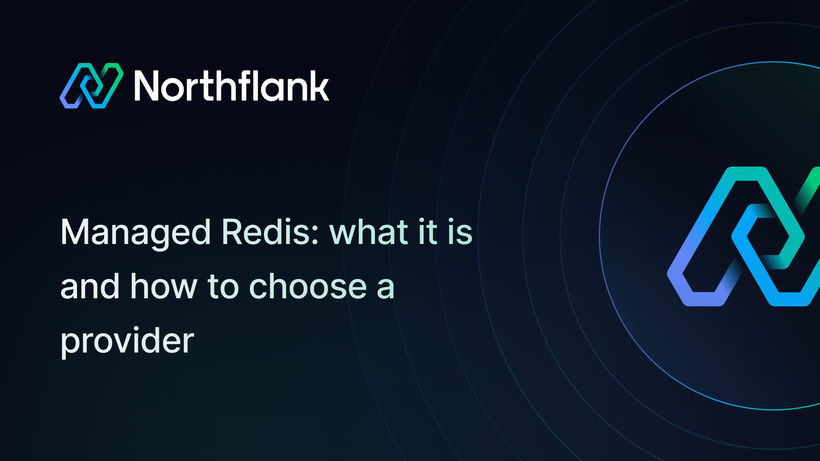

Top 6 Fly.io alternatives in 2025
If you’ve been deploying apps on Fly.io, you’ve probably enjoyed its global infrastructure, Docker-based workflows, and performance-first design. It’s a solid platform — no doubt about it.
But maybe you’ve run into a few limits. Maybe the pricing gets unpredictable as you scale. Maybe you need a richer add-on ecosystem, simpler deployments, or tools that better fit the way your team works.
The good news? In 2025, there’s a whole ecosystem of modern alternatives out there — each with its own strengths, trade-offs, and ideal use cases. Whether you're after Heroku-style simplicity, enterprise-ready infrastructure, or cutting-edge edge deployments, there’s a platform out there that might fit you better.
If you’re already familiar with the space and just want a quick side-by-side, here’s a breakdown of the key differences between top platforms:
| Platform | Best For | Key Strengths | Free Tier | Pricing Starts |
|---|---|---|---|---|
| Northflank | Full-stack apps, databases, CI/CD, multi-cloud | Built-in CI/CD, integrated databases, flexible scaling, great DX, multi-cloud, VPC support | 2 services, 2 jobs | Pay-as-you-go |
| DigitalOcean App Platform | Simplicity with control | Integrated database, autoscaling, global CDN | 3 static sites | $5/mo |
| Render | Web apps, APIs, databases | Zero-downtime deploys, PR previews | Low-traffic apps | $19/mo |
| Vercel | Frontend apps & static sites | Edge deploys, performance tools, serverless focus | 1M monthly requests | $20/mo |
| Cloudflare Workers | Serverless at the edge | Ultra-low latency, global scale | 100K daily requests | $5/10M requests |
| Heroku | Simplicity, hobby & production | Zero-config deploys, massive add-on ecosystem | Limited free dynos | $5-7/dyno/mo |
Let’s be clear: Fly.io is a great platform. It nails things like global latency optimization, built-in Postgres, edge deployments, and a slick, developer-friendly CLI. Many developers love it for hobby projects, microservices, and fast global APIs.
But like any tool, it’s not a perfect fit for every situation. Here’s where folks start looking elsewhere:
- Pricing surprises at scale: Fly’s pricing is fine for small apps, but as soon as you start scaling instances, adding regions, or bumping up resources, things get murky. Several devs on Reddit mention how it’s easy to rack up unexpected charges or how the pricing model feels more complicated than it needs to be.
- Limited add-on ecosystem: Compared to platforms like Heroku or Render, Fly has fewer plug-and-play services — things like background workers, queues, object storage, or third-party integrations. You’ll often end up wiring together external services manually.
- A Docker-focused learning curve: If your team isn’t already fluent in Docker or container-based workflows, onboarding can feel steep. Unlike Render or Vercel, which abstract away a lot of deployment details, Fly requires you to be comfortable with images, processes, volumes, and networking quirks.
- Niche tooling and platform feel: Fly has its own workflow philosophy — CLI-first, config-driven, and region-centric. Some developers dig this; others find themselves missing the simplicity and conventional “click-to-deploy” feel of more traditional PaaS platforms.
- Scalability and infrastructure trade-offs: While Fly shines for globally distributed apps and edge workloads, some teams need different scaling patterns, VPC peering, private networking, or more traditional regional infrastructure setups — areas where platforms like AWS, DigitalOcean, or Railway might be a better match.
- Recent shift away from GPU support: In 2024, Fly.io publicly retracted its GPU hosting ambitions after realizing that its platform's strengths didn't align well with the infrastructure demands of GPU-heavy workloads like AI inference and video processing. If your stack includes GPU-dependent apps, you’ll need to look elsewhere; platforms like Northflank are better suited for those cases.
If you spend time in dev communities like Reddit, Hacker News, or X, you’ll hear a mix of praise and pain points:
“Love how easy it is to deploy globally. But wish it had more third-party add-ons like Heroku.”
“Great for small apps and personal projects. Gets tricky when scaling up.”
“CLI-first workflow is solid, but onboarding junior devs takes longer compared to Render or Vercel.”
Beyond these common takes, some developers have voiced frustrations about reliability and pricing clarity. On Reddit, people have shared concerns like:
“Our app was completely down for hours, and the status page said everything was fine.”
“Even with enough capacity, we still hit weird latency issues and it’s not reflected anywhere.”
Here’s what people consistently look for when comparing alternatives and why these things actually matter in real-world projects:
Most developers want a platform that lets them focus on building, not fiddling with infrastructure. The ability to deploy via a git push or a straightforward CLI command is huge, especially when you’re iterating fast.
Tools like Northflank and Vercel have nailed this with zero-config deploys that just work out of the box. If you’re used to that, anything more involved like writing Dockerfiles, configuring processes, or debugging networking configs (which Fly sometimes requires) — feels like friction.
CI/CD pipelines should feel invisible, reliable, fast, and easy to hook up. If your platform doesn’t have solid built-in CI/CD (or at least effortless GitHub/GitLab integration), you’re losing precious time. Developers value automatic deploys on main or PR merges, staging/previews for pull requests, and easy rollback if a deploy goes sideways.
Early-stage apps might run fine on a $5 instance, but growth happens fast and you don’t want scaling to turn into a research project. Developers look for **Horizontal scaling (**adding instances to handle traffic), Vertical scaling (upgrading CPU/memory as needed), and Autoscaling (without manual babysitting). Fly.io does edge scaling well for some workloads, but if you need predictable autoscaling rules, VPC peering, or per-region controls, other platforms might offer more out-of-the-box.
This comes up a lot. Developers hate ambiguous billing and unexpected spikes. What seems cheap at first can get messy with hidden fees for extra regions, charges for network egress or storage and confusing per-second instance pricing. Platforms like Northflank offer flat-rate plans or extremely clear usage dashboards, which is comforting for both solo developers and teams on a budget.
When you’re deploying an app, you rarely just need a server. You also need:
- Managed databases (Postgres, MySQL, Redis)
- Queues (Sidekiq, RabbitMQ, etc.)
- Object storage (S3-style)
- Background workers
- Monitoring, logging, analytics
Northflank and Heroku, for example, have a long list of ready-to-go add-ons you can provision in seconds.
One of Fly’s biggest selling points is edge-first hosting. If your app has a global audience, you’ll want to serve content as close to users as possible.
But developers also weigh:
- How easy is it to control regions per service?
- Are all regions equally reliable and fast?
- Can I easily add/remove regions without downtime?
- How’s the pricing for multi-region setups?
Some alternatives (like Vercel, Northflank, and Cloudflare Workers) simplify global deployment more than Fly, especially if you don’t need persistent storage everywhere.
Good platforms are invisible. Great platforms actually feel good to use. Devs care a ton about:
- Clean, well-structured docs
- Helpful, responsive support
- A CLI that behaves consistently
- A dashboard that isn’t slow or confusing
- Straightforward logs and debugging tools
When something goes wrong at 2am, you don’t want to be stuck reading vague errors or chasing logs across regions.
Are you looking for a new home for your applications? Here are seven powerful alternatives that combine Heroku's simplicity with compelling modern features.
Northflank is a platform that enables developers to build, deploy, and scale applications, services, databases, and jobs on any cloud through a self-service approach. For DevOps and platform teams, Northflank provides a powerful abstraction layer over Kubernetes, enabling templated, standardized production releases with intelligent defaults while maintaining necessary configurability.
Northflank advances the legacy of pioneers like Heroku and Pivotal Cloud Foundry. While Heroku perfected the self-service developer experience, it didn't support complex workloads in enterprise cloud accounts. Cloud Foundry offered the right application abstraction to simplify complexity, but its underlying infrastructure proved costly and difficult to implement. Northflank delivers the best of both worlds: support for complex workloads, exceptional developer experience, and appropriate abstractions in your cloud environment—all within minutes and at a reasonable cost.

Key features:
- End-to-end CI/CD pipeline automation
- Built-in monitoring and logging
- Automatic horizontal scaling
- Private networking and VPC support
- Integrated secrets management
- Database as a Service
- Multi-cloud support (AWS, Azure, GCP, and others)
Pricing: Northflank offers a generous free tier that includes deployment of 2 services, 2 jobs, and 1 addon. Users can connect their existing cloud account, with limited resources and plans available. A Pay-as-you-go Pro plan provides additional capabilities.
See how Weights company uses Northflank to scale to millions of users without a DevOps team
DigitalOcean App Platform is a PaaS solution built on DigitalOcean's robust infrastructure, striking an optimal balance between simplicity and control for growing applications.

Key features:
- Integrated CI/CD pipelines
- Automatic vertical and horizontal scaling
- Built-in monitoring and alerting
- Seamless integration with DigitalOcean's managed databases
- Global CDN support
Pricing: DigitalOcean App Platform includes a free tier supporting up to 3 static sites with 1GiB data transfer allowance per app. Paid plans begin at $5 per month with enhanced features.
Render is a modern cloud platform that streamlines the hosting of web applications, static sites, APIs, and databases, providing automatic SSL certification and CDN integration.

Key features:
- Zero-downtime deployments
- Automatic HTTPS and DDoS protection
- Native SSD storage
- Pull request preview environments
- Custom domain support
Pricing: Render provides a free tier for low-traffic applications, with paid plans starting at $19 per user monthly.
Vercel is a cloud platform optimized for frontend frameworks and static sites, delivering exceptional performance and developer experience.

Key features:
- Advanced performance optimization
- Comprehensive serverless function support
- Integrated CI/CD pipeline
- Global edge network deployment
- Sophisticated analytics and monitoring
Pricing: Vercel's free tier accommodates frontend applications with up to 1,000,000 monthly requests. Premium plans start at $20 monthly with advanced features.
Cloudflare Workers is a unique serverless platform that allows you to run your app at the edge, anywhere in the world. It’s particularly powerful for serverless functions, APIs, and applications that need extreme global distribution without maintaining traditional infrastructure.

Key features:
- Deploy at the edge for low-latency performance
- Built-in integrations with Cloudflare's global CDN
- Scalable without managing servers
Pricing:
The first 100,000 requests each day are free, and paid plans start at just $5/10 million requests.
Heroku has long been the go-to platform for developers looking for simple, scalable, and easy-to-use cloud hosting. With a large catalog of add-ons and seamless Git-based deployments, Heroku offers a truly developer-friendly experience.

Key features:
- Zero-config deployments via Git
- Huge selection of add-ons (databases, caching, storage, etc.)
- Automated scaling
- Integrated monitoring and alerting
- Easy CI/CD integration
Pricing:
This article provides a deeper look into Heroku's pricing, breaking it down in an easy-to-understand way.
For a closer look at how Heroku compares to other tools, this article offers a well-rounded analysis.
Fly.io is a great platform, but like any tool, it has quirks that might not align with your evolving needs as your app grows. Whether it’s unpredictable pricing, scaling limitations, or a need for better integrations, exploring alternatives can help you find a platform that better fits your workflow and budget.
If you’re looking for something that balances powerful features with an exceptional developer experience, Northflank could be just what you need. With automated CI/CD pipelines, flexible scaling, and transparent pricing, it’s a platform designed to help teams ship fast without the headaches. Why not give it a try and see if it’s the right fit for your next project?



